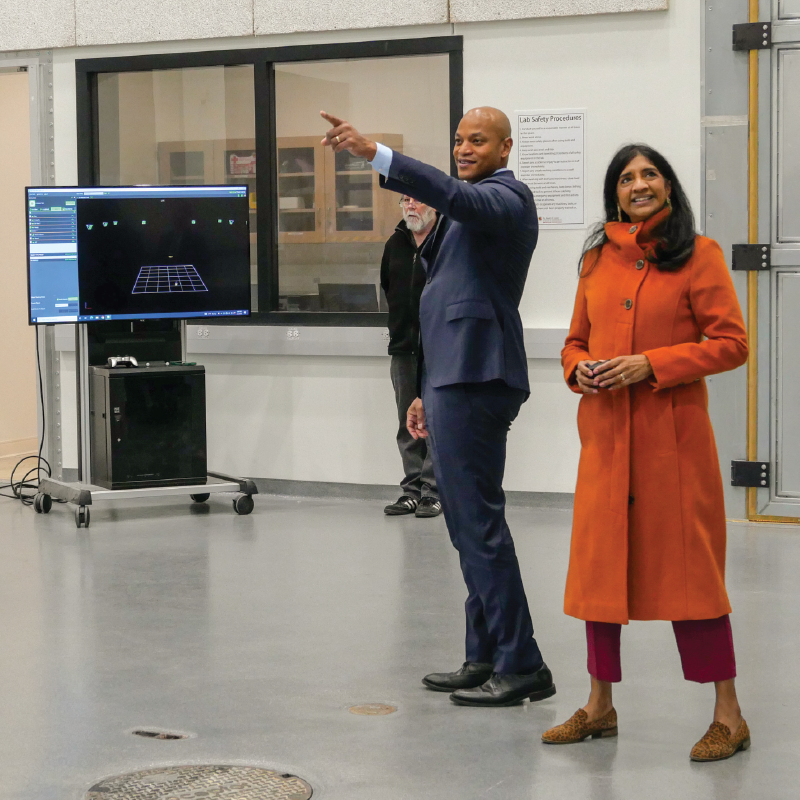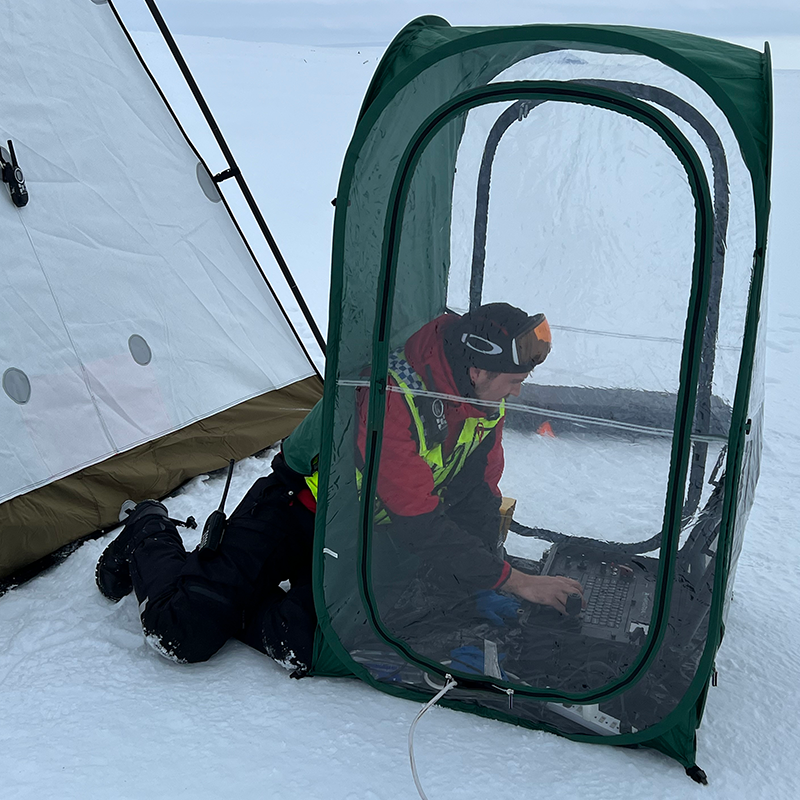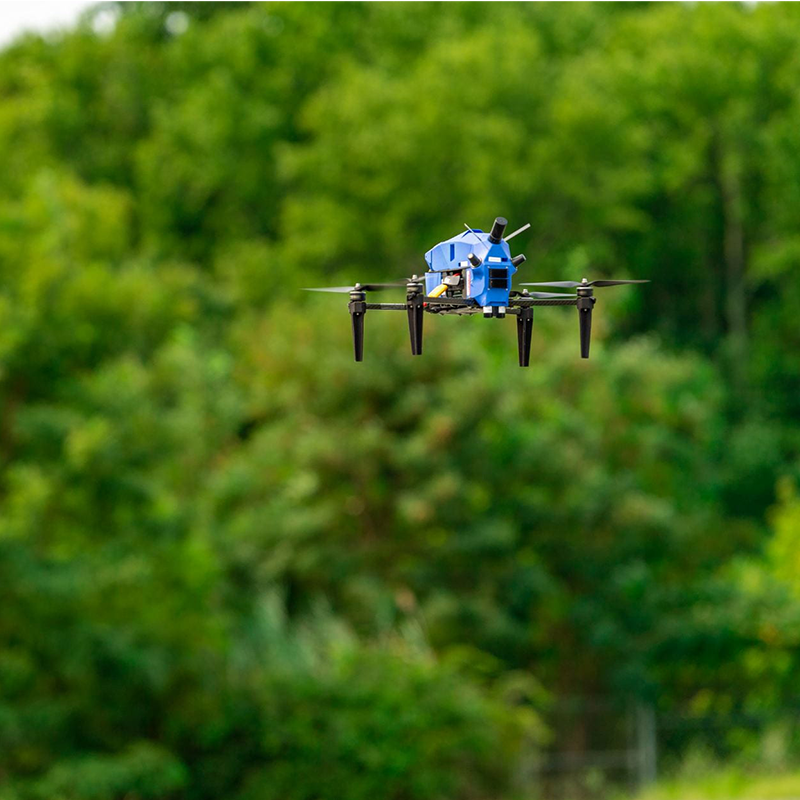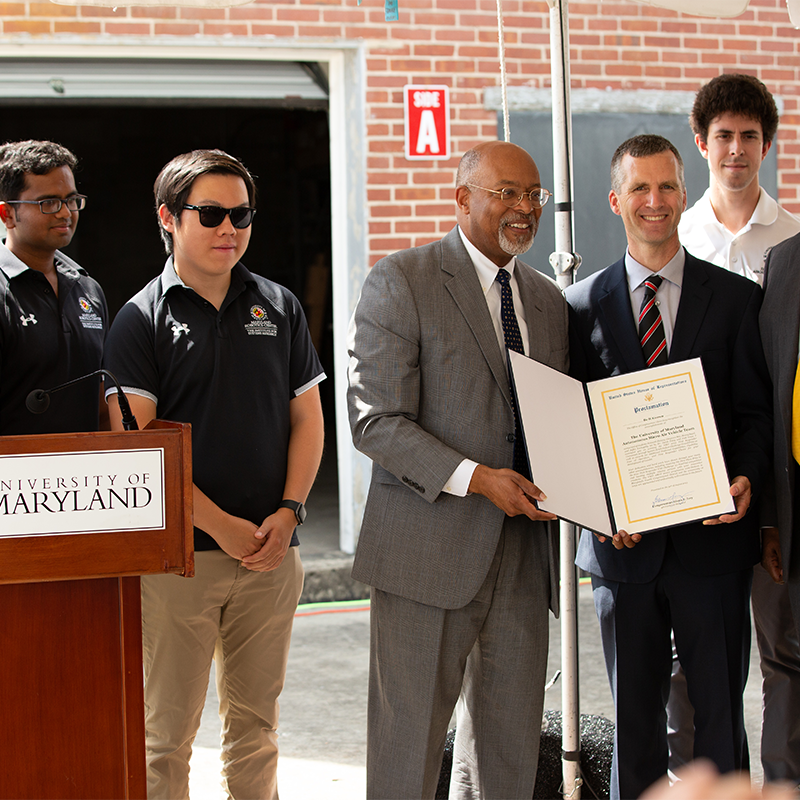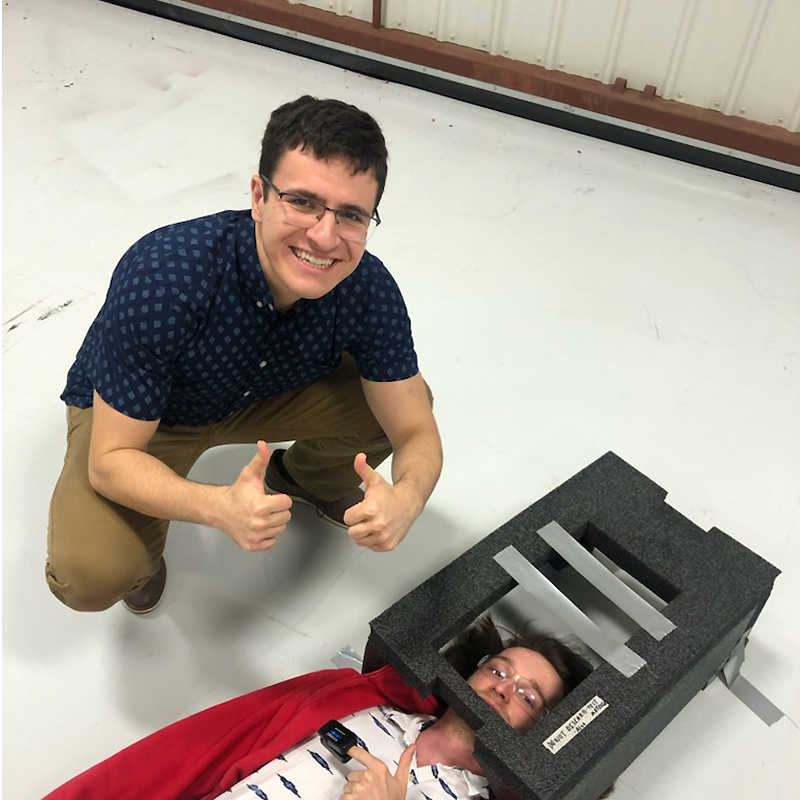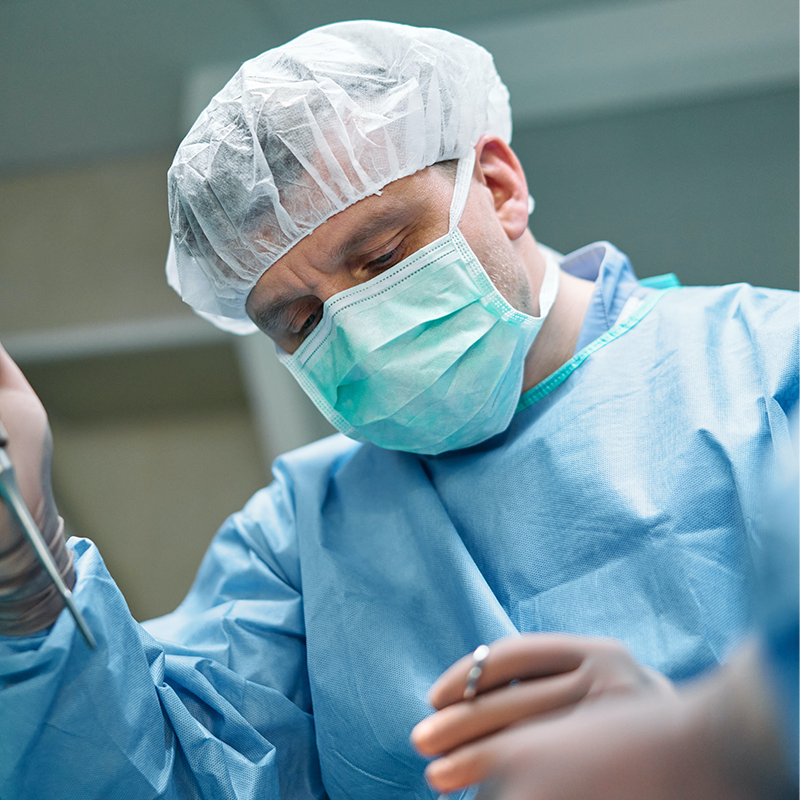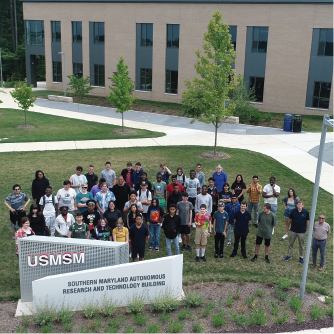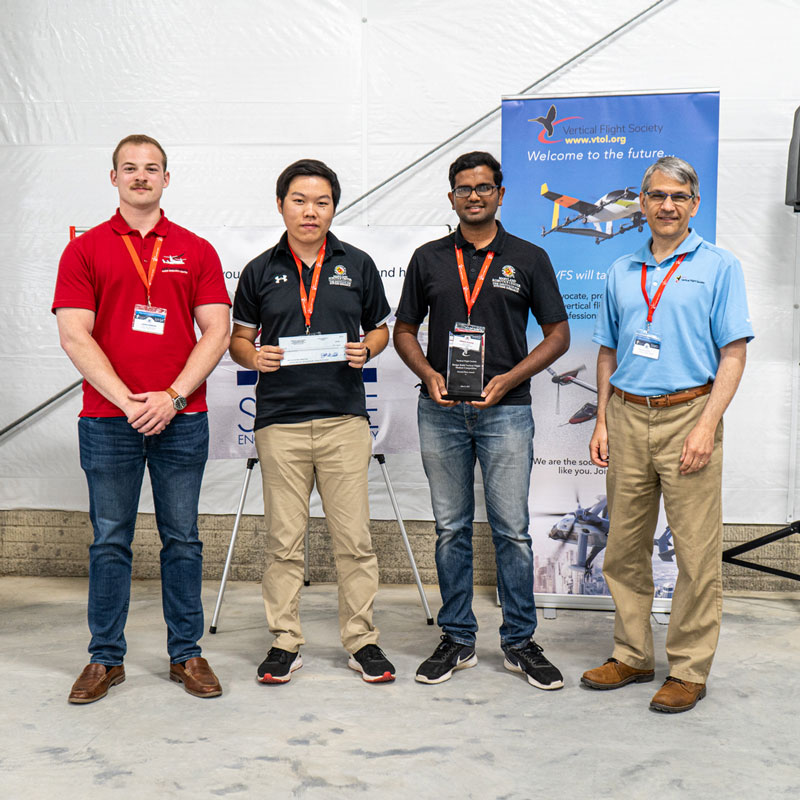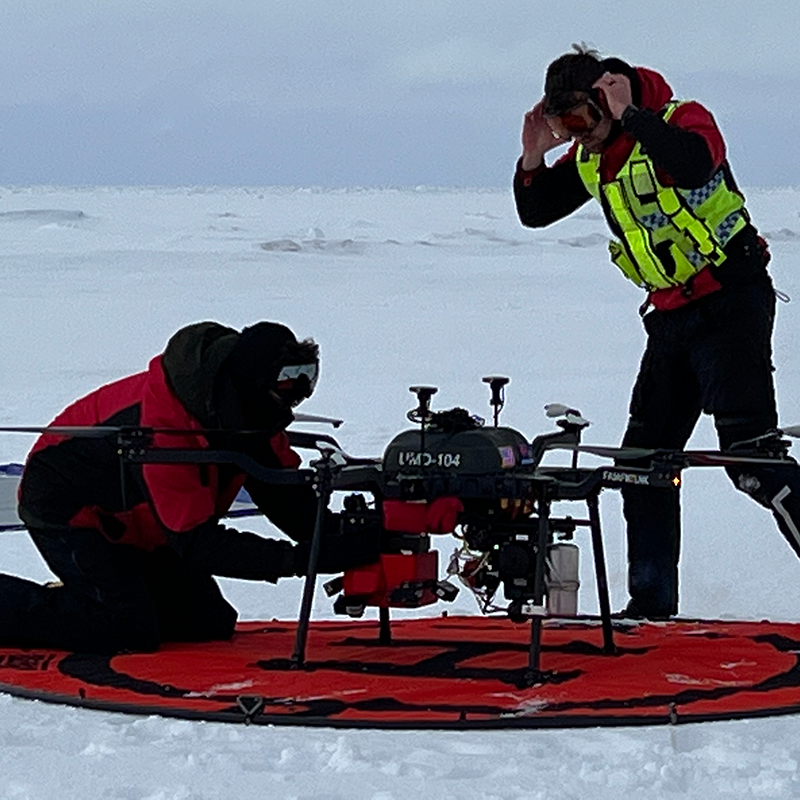News Story
Hands-on Engineering Is the Focus as UAS Test Site Hosts Summer Interns
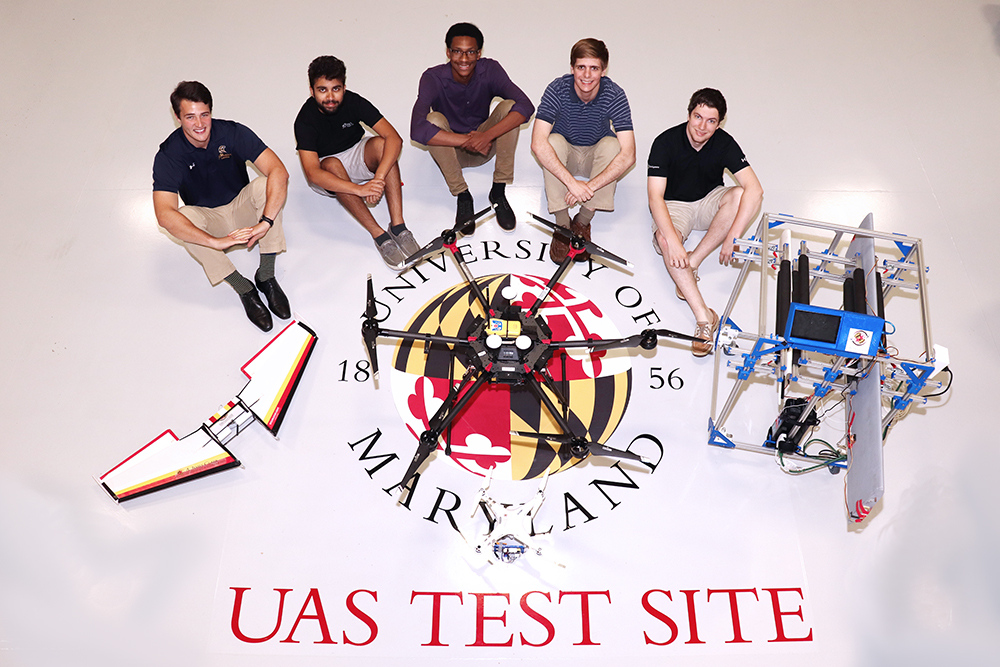
Cameron Williams anticipated the task would take about a day.
The sensors he had ordered for his project hadn’t come in yet, so the young engineer—who is spending his summer as a UMD UAS Test Site intern--decided to make constructive use of the time by creating some supports for them. Cameron was highly experienced with Computer-Assisted Drawing (CAD) and had no problem designing the supports.
But when he actually produced them using a 3-D printer, he wasn’t satisfied with the results. “I had to try at least 11 or 12 designs before they came out right,” he recounts.
Though surprises like these can be frustrating, they illuminate an important aspect of an engineer’s work: it’s not just about coming up with great ideas. Those ideas have to be refined, often through hours of patient troubleshooting.
“Things don’t always go as planned,” notes Cameron, who completed an associate’s degree in engineering at the College of Southern Maryland this spring and will continue his education at the University of Maryland starting in the fall. “You have to stay on your toes and be prepared for the unexpected. When something doesn’t work, you have to figure out why—or come up with an alternative. All of this takes time, so effective time management is important as well.”
Such real-life lessons are gleaned not through textbook learning but through hands-on projects—and that’s exactly the kind of experience that Cameron and four other interns are gaining at the UMD UAS Test Site this summer.
The students’ projects—devised in collaboration with faculty mentors in their programs of study—span a wide spectrum of UAS applications. Cameron’s project is in the area of explosives disposal: he is developing a sensor-based system that can detect non-metallic explosives from a height, and then showing that the system can be successfully deployed using a UAS. “I wanted to undertake a project that makes use of my background in chemistry, and that can help people,” he says.
The other interns’ endeavors are no less ambitious. Nil Patel, a rising junior in aerospace engineering at UMD, is developing a system that uses unmanned aircraft both to launch and recover small quadcopters—making it easier to conduct measurements in densely wooded or urban areas that conventional fixed-wing aircraft can’t reach. Luke Quinn, a physics student at St. Mary’s College, is placing magnetometers on drones which can then be used to scan archeological sites—from above.
Meanwhile, UMD students Jesse Parreira (mechanical engineering) and Alex Vecchioni (aerospace engineering) were tapped for an in-house project developed at the Test Site: to design, build, and program a digital test bench. It’s an endeavor that demands effective collaboration, with the two interns bringing a mix of mechanical and coding skills to the work.
Each of the summer interns has encountered challenges and constraints that must be addressed. Patel, for example, realized early on that his project scope was too wide for the available time, so he narrowed it down. “For now, I’m focusing on deployment rather than recovery,” he explains. Specifically, he’s setting out to show that the range of the deployed quadcopters can be enhanced significantly by having them glide down on a wing that is released from the hovering drone.
The interns have also been responsible for allocating their project resources and procuring needed components and resources within the available budget. In addition, each intern is required to deliver a weekly, timed presentation on project status, utilizing quad charts.
The goal, explains UAS Test Site director Matt Scassero, is to provide experience with all aspects of a successful project—from the actual engineering work to the planning, budgetary, communications, and project management tasks that also play an essential role. “Engineers need the so-called ‘soft skills’ in addition to their technical know-how,” Scassero explains. “Very often, you need to pitch an idea to a company or organization. You need to plan it so it comes in within budget. You have to make sure you’re in compliance with any regulations that might apply.”
That said, Scassero and the Test Site team give the interns considerable autonomy in bringing their projects to fruition, while always being ready to provide guidance and support. Cameron Williams says he appreciates the level of independence.
“It’s not the kind of experience where you come in every day and are told ‘do this, do that,’” he says. “We, the interns, come up with ideas and execute them, and the team is here to help and support. I’m not just doing mundane tasks; I’m working on something that I created and designed.
Fellow intern Vecchioni agrees. “At some internships, you spend a lot of your time waiting for the regular employees to come up with something for you to work on. That’s not how it is here. Each of us has a project and deliverables we must meet.”
Internships are offered each summer at the UMD UAS Test Site to eligible students at the University of Maryland, College Park, the College of Southern Maryland, St. Mary’s College of Maryland, or enrolled in a University of Maryland academic program offered through the University System of Maryland at Southern Maryland. For more information, contact Sara Lloyd, UAS Test Site Administrative Co-ordinator, or phone 301-862-7824.
Published July 26, 2019
